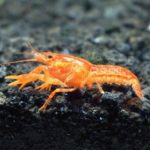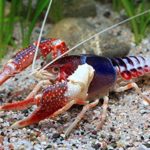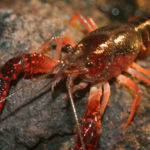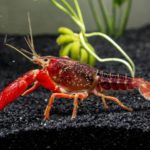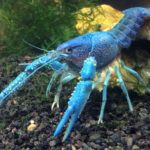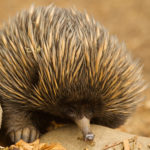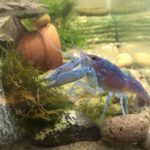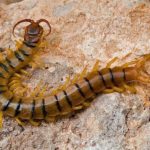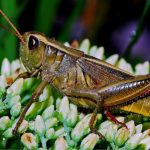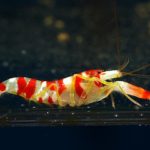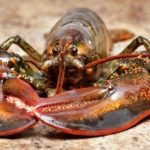Crayfish
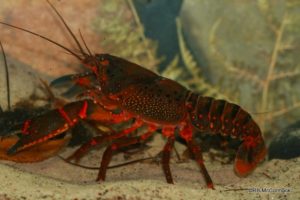 Crayfish is a benthic animal. Normally, he moves along the bottom on his walking legs head first. But it is necessary to frighten him, as he makes a sharp sweep of the caudal fin under himself and swiftly jerks backwards (pent).
Crayfish is a benthic animal. Normally, he moves along the bottom on his walking legs head first. But it is necessary to frighten him, as he makes a sharp sweep of the caudal fin under himself and swiftly jerks backwards (pent).
In crayfish, females outwardly differ from males. The female abdominal segments are much wider than the cephalothorax. In males, the abdomen is already cephalic. At the end of winter, the female sweeps out the eggs, which are attached to the legs of the abdomen. Here, eggs develop. At the beginning of the summer, a rachata hatches from them.
The first 10-12 days of life they remain under the belly of the female, and then go on to independent existence.
The chitinous cover is very slightly dilated, so the growth of young crayfishes occurs unevenly. Periodically, the old cover becomes close to the growing animal. He lags behind the body, and under it a new veil is formed. There is a molt: the old cover bursts, and from it comes the crayfish, covered with soft and colorless chitin. Crayfish is growing rapidly, and chitin is impregnated with lime and hardens. Then growth stops until a new molt.
Like the earthworm, the nervous system of the crayfish consists of an oclo-pharyngeal nerve ring and an abdominal neural chain. Nerve nodes in crayfish are more developed, especially the supra-pharyngeal and sub-pharyngeal. From the supra-pharyngeal node, the nerves retreat to the eyes and antennae, from the sub-pharyngeal to the oral organs, from the ventral nerve chain to the internal organs and limbs.
Long antennas serve as crayfishes with organs of touch and smell. They feel the surrounding objects. At the base of the short antennae is the organ of balance and hearing.
The organs of vision – bulging eyes – sit on movable stems. This gives the crayfish the opportunity to look in all directions. The eyes of crayfish are complex. They consist of separate separate eyes. Each eye sees only a small part of the surrounding crayfish space, and all together perceive the whole image. This vision is called mosaic. Mosaic vision is characteristic of most arthropods.
River crayfish lives in fresh clean water – rivers, streams and lakes. During the day, crayfish hide under rocks or in burrows dug at the bottom or off the coast under the roots of trees. At night, they crawl out of their hiding places in search of food. River crayfish are omnivorous. They feed on plants and animals, and can eat both live and dead prey. The smell of food crayfishes is felt at a great distance, especially if the corpses of frogs, fish and other animals began to decay.
